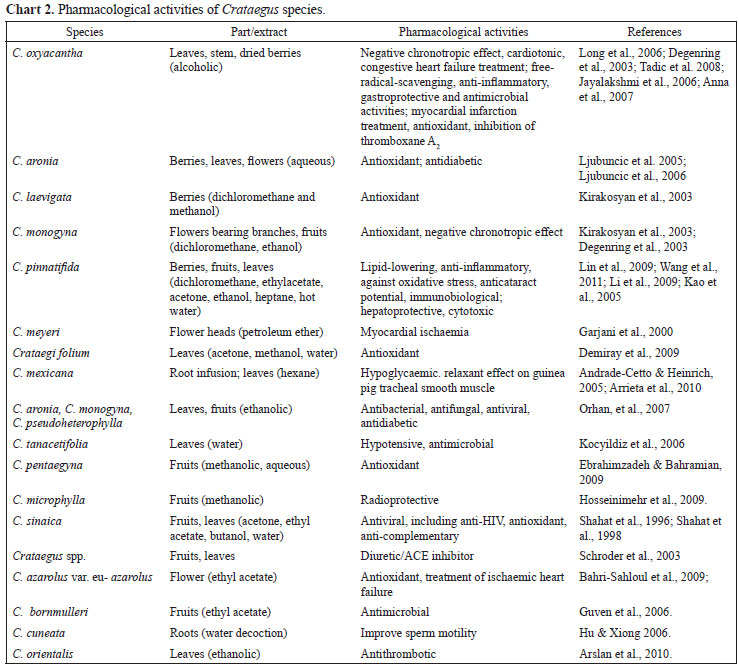Traditional drugs have become a subject of world importance, with both medicinal and economical implications. A regular and widespread use of herbs throughout the world has increased serious concerns over their quality, safety and efficacy. Thus, a proper scientific evidence or assessment has become the criteria for acceptance of traditional health claims. Plants of the genus Crataegus, Rosaceae, are widely distributed and have long been used in folk medicine for the treatment of various ailments such as heart (cardiovascular disorders), central nervous system, immune system, eyes, reproductive system, liver, kidney etc. It also exhibits wide range of cytotoxic, gastroprotective, anti-inflammatory, anti-HIV and antimicrobial activities. Phytochemicals like oligomeric procyanidins, flavonoids, triterpenes, polysaccharides, catecholamines have been identified in the genus and many of these have been evaluated for biological activities. This review presents comprehensive information on the chemistry and pharmacology of the genus together with the traditional uses of many of its plants. In addition, this review discusses the clinical trials and regulatory status of various Crataegus plants along with the scope for future research in this aspect.
Crataegus; flavonoids; hawthorn; maloideae; thorny bush





